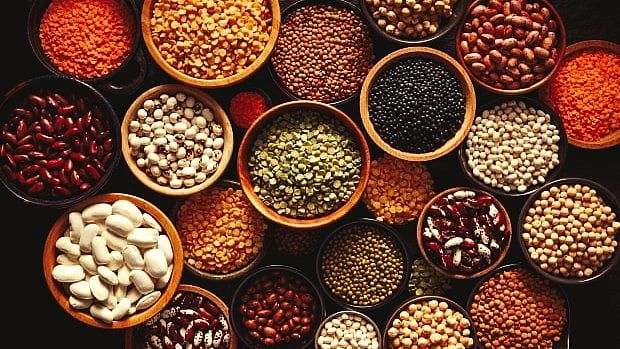
India’s agriculture sector policies in general, and pulses sector policies in particular, need a thorough review / revision, keeping in mind the current and emerging challenges.
In the Union Budget 2025-26 address, the Finance Minister talked about achieving self-sufficiency (Aatmanirbharata) in pulses over six years in a mission mode approach with a special focus on Tur/arhar (pigeon pea), Urad (black gram) and Mung (green gram).
The government’s concern is understandable, as pulse imports have been steadily rising in recent years. For the year 2024-25, it stands at an estimated 55 lakh tonnes, valued at about US $3 billion.
Despite having the world’s largest area for pulse cultivation (290-300 lakh hectares) in two seasons, kharif and rabi, and being ranked as the world’s largest producer, processor and consumer, the current status of the pulse sector in India leaves much to be desired. Substantial improvement is possible in production, processing, consumption and trade.
This is not to take away any credit from the decent work done over decades, but to highlight that a lot more was indeed possible in order to make the sector globally competitive.
What characterises the Indian pulses sector at present is a combination of low yields, unstable production, price volatility, inefficient processing, a lack of value addition, low per capita availability, skewed consumption patterns, an unstable trade policy and a rising import dependence, among others.
The government’s own data show a steady decline in domestic production. From 273 lakh tonnes in 2021-22, the output fell to 260 lakh tonnes in 2022-23 and further down to 242 lakh tonnes in 2023-24. In other words, a 30 lakh tonne decline in the last two years. Production has consistently fallen short of the annual target.
Multiple factors have contributed to this. Cultivation on marginal lands; a low level of input usage; poor agronomic practices; no real breakthrough in seed technology; inefficient marketing support; and, not the least, short-sighted trade policies.
India’s agriculture sector policies in general, and pulses sector policies in particular, need a thorough review and revision, keeping in mind the current and emerging challenges.
Land constraints, water shortage and climate change are likely to stymie farm growth in the future. We need to practice climate-smart and climate-resilient agriculture. Pulse cultivation helps fix nitrogen in soil.
As domestic production is vulnerable to adverse factors, managing the supply side and the demand side is a daunting task. Striking a fine balance is possible with political will and perseverance.
More importantly, we need to boost pulse consumption, as undernutrition is India’s bane. As protein-rich legumes, pulses can help overcome pervasive protein deficiency. Pulses lend themselves to processing and value addition.
A tragic aspect of the pulses sector is unreliable production data, resulting in a credibility crisis. Undoubtedly, crop production estimation is tricky and subject to correction or revision. Crop production estimation is a combination of art, science and experience. There is little scope for substantial revisions, except in the case of major damage due to, say, a natural calamity. Unexplained large variation or revision of data casts doubts about the estimation process and does nothing to advance transparency.
More often than not, the crop output numbers are overstated in official estimates. But remember, the market is the final arbiter, and the value chain participants on the ground know best. The official collection and dissemination mechanism needs strengthening. Inaccurate data encourage speculation.
What does the future hold? There are two scenarios: business-as-usual and creative disruption. If India continues with its business-as-usual approach, self-sufficiency will continue to be elusive. Self-sufficiency may be a catchy and smart statement, but it has to be backed by sound policies and a strong implementation programme for achieving success.
The transformation of the Indian pulses sector deserves an ecosystem approach. We need a holistic examination of various sub-systems. They include input sourcing and usage; agronomy; adoption of pre-harvest and post-harvest technology; output marketing; processing, distribution and consumption; trade policy; tariff policy; food and nutrition security; availability, affordability and accessibility.
How to achieve self-sufficiency is a question that deserves a detailed answer. Let me try to capture the spirit in brief.
Encourage breakthroughs in seed technology
Strengthen the input delivery system
Deploy multiple technologies along the supply chain (farm to fork)
Review MSP rationale, procurement systems and trade policies
Encourage consumption among vulnerable sections through welfare programmes
Modernise the dal milling industry
Government intervention must be data-driven and not knee-jerk
It devolves on the policymakers and all stakeholders to evolve a progressive, forward-looking strategic action plan.
(G. Chandrashekhar is an economist, senior journalist and policy commentator specialising in agribusiness and commodity markets. He serves as Independent Director on corporate boards and is an Independent Member of SEBI – CDAC. Views are personal)